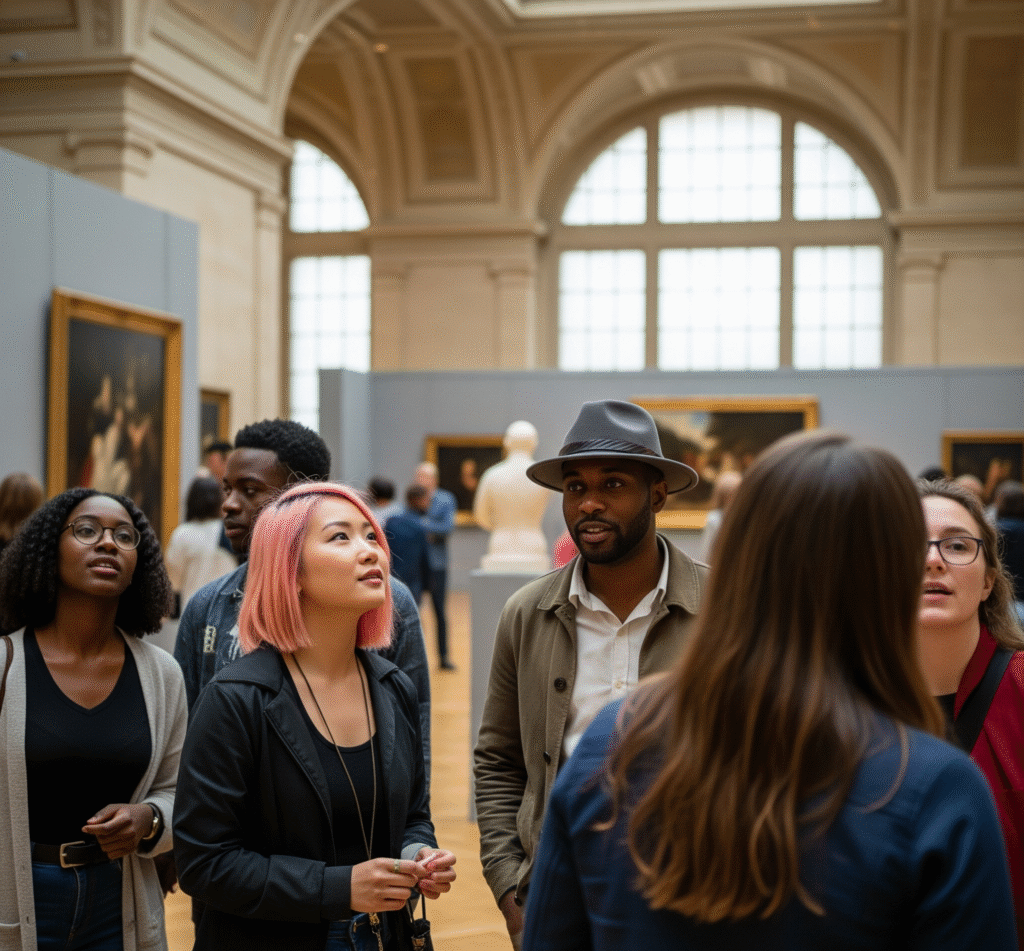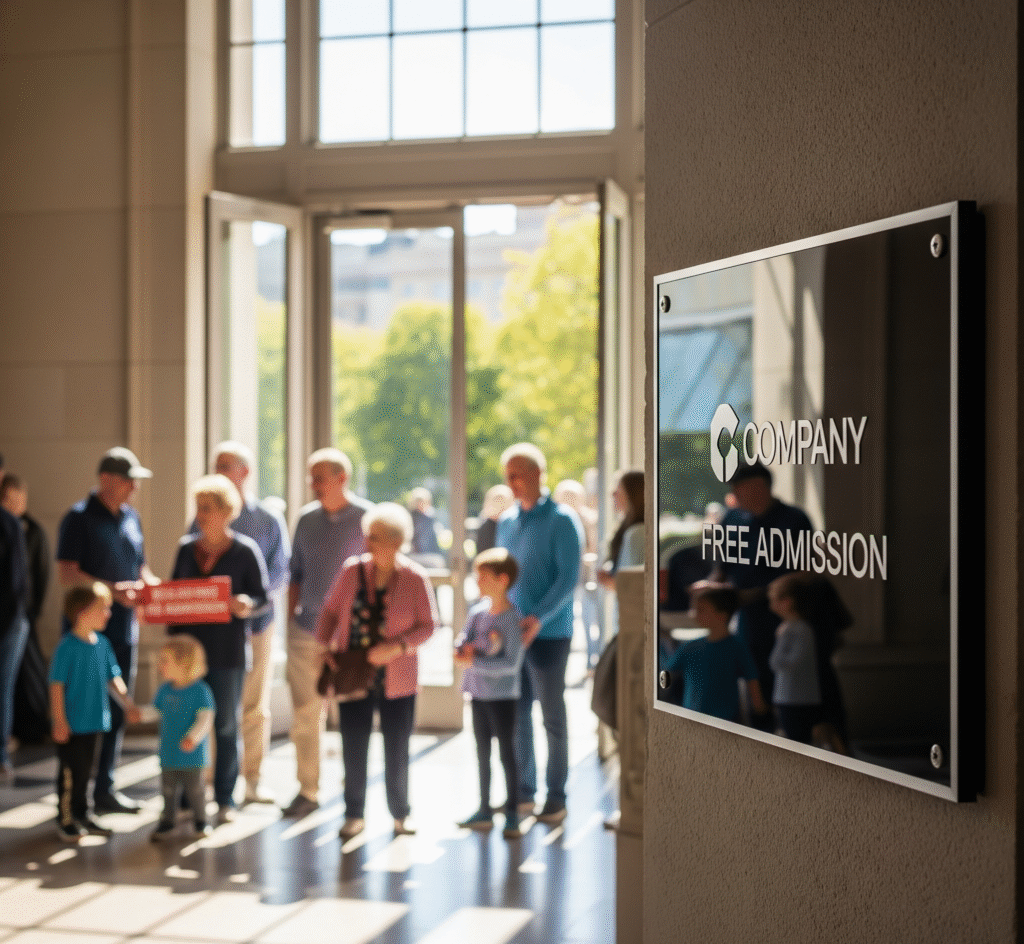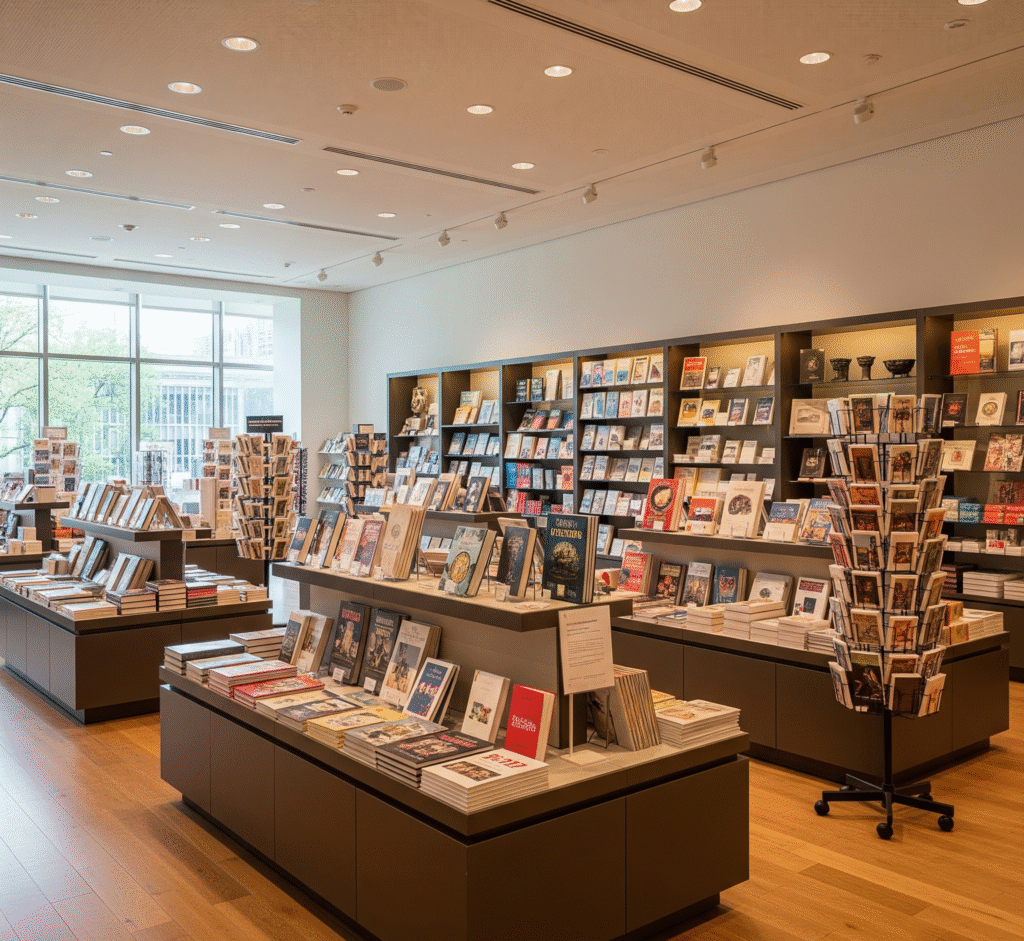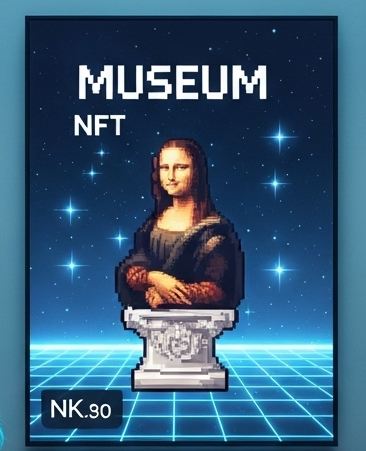The question of why some museums can offer free admission while others charge substantial entry fees has become increasingly relevant in discussions about cultural accessibility. Behind every free museum lies a carefully crafted funding strategy that balances financial sustainability with the mission to provide open access to art, history, and science. This article explores the diverse funding models that make free admission possible, examining real-world examples and the advantages and challenges of each approach.
- 1 The Value of Free Museums Funding Models
- 2 Government Subsidies and Public Funding
- 3 Endowment-Based Funding
- 4 Corporate Sponsorship Models
- 5 Philanthropic Support and Donor Models
- 6 Alternative Revenue Streams and Earned Income
- 7 Public-Private Partnership Models
- 8 Emerging Digital Revenue Streams
- 9 Sustainability Challenges and Future Directions
- 10 Frequently Asked Questions About Free Museums Funding Models
- 10.1 Do free museums receive less funding overall than those charging admission?
- 10.2 How do economic downturns affect free museums compared to those charging admission?
- 10.3 What percentage of museums worldwide offer free admission?
- 10.4 How does free admission impact museum attendance and demographics?
- 10.5 Can smaller museums implement free admission models successfully?
- 11 Conclusion: The Future of Free Museum Access
The Value of Free Museums Funding Models
Free entry to museums represents more than just a financial policy—it is a commitment to democratic access to cultural heritage. When the Metropolitan Museum of Art in New York introduced mandatory admission fees for out-of-state visitors in 2018, it sparked renewed debate about the importance of accessible cultural institutions. Research consistently shows that removing financial barriers significantly increases visitation, particularly among underrepresented communities.

Free admission policies significantly increase museum visitation across diverse demographic groups
Museums that operate without charging admission fees have to develop robust alternative revenue streams. These institutions have pioneered innovative approaches to sustainability that often result in stronger community connections and more diverse funding portfolios than their admission-dependent counterparts.
Government Subsidies and Public Funding
Government support represents one of the most significant funding sources for free museums worldwide. This model relies on the principle that cultural institutions provide a public good worthy of taxpayer investment.
National Government Funding
In the United States, the Smithsonian Institution’s network of museums operates on a primarily federally funded model. Approximately 62% of the Smithsonian’s annual budget comes from congressional appropriations, allowing its Washington D.C. museums to offer free admission to over 30 million visitors annually. This funding covers essential operational costs including staff salaries, building maintenance, and collection care.
The United Kingdom takes a similar approach with national museums like the British Museum, National Gallery, and Tate Modern. Since removing admission charges in 2001, these institutions have seen visitor numbers increase by over 150%. The UK government provides approximately £450 million annually to support these museums, recognizing their contribution to tourism, education, and national identity.
Local and Municipal Support
At the local level, cities often fund museums through dedicated taxes or budget allocations. The Detroit Institute of Arts is a good example—after facing potential closure during Detroit’s bankruptcy, voters in three counties approved a property tax that generates approximately $26 million annually for the museum, allowing it to offer free admission to residents of those counties.
Advantages of Government Funding
- Provides stable, predictable funding for long-term planning
- Aligns museum operations with public service mission
- Enables universal access regardless of socioeconomic status
- Often includes additional support for educational programs
Challenges of Government Funding
- Vulnerability to political changes and budget cuts
- Potential for political influence over programming
- Often insufficient to cover all operational needs
- May require compliance with complex regulations
Endowment-Based Funding
Endowments represent another powerful funding model that enables museums to offer free admission. An endowment is essentially a financial foundation—a pool of invested funds that generates annual income while preserving the principal.
The Cleveland Museum of Art exemplifies this approach with its substantial endowment of nearly $800 million. By drawing approximately 5% annually from these investments, the museum generates around $40 million in reliable income. This endowment-centered strategy allows the museum to maintain free general admission while continuing to build its world-class collection.
Similarly, the Toledo Museum of Art in Ohio relies heavily on its $176 million endowment to support operations without charging admission fees. The museum’s founding philosophy, established by glass industry magnate Edward Drummond Libbey, emphasized public accessibility through financial independence.
| Museum | Endowment Size | Annual Draw | Percentage of Operating Budget |
| Cleveland Museum of Art | $800 million | $40 million | 60% |
| Toledo Museum of Art | $176 million | $9 million | 50% |
| Metropolitan Museum of Art | $3.3 billion | $165 million | 30% |
| Guggenheim Museum | $85 million | $4.3 million | 5% |
Building a substantial endowment typically requires significant philanthropic support, often from wealthy donors or foundations with connections to the museum’s mission. The process is gradual—as Baltimore Museum of Art director Christopher Bedford noted, “Building endowment is slow and arduous,” though the long-term benefits for sustainability are substantial.
Corporate Sponsorship Models
Corporate partnerships represent an increasingly important funding stream for museums that want to eliminate admission fees. These arrangements typically involve a company providing financial support in exchange for brand visibility, exclusive events, and association with cultural enrichment.

Corporate sponsorship acknowledgment at a major museum offering free admission
Sponsored Free Days and Programs
Many museums offer corporate-sponsored free admission days or extended hours. The Art Institute of Chicago partners with Bank of America to offer free Thursday evenings, while Target sponsors free admission at museums nationwide through its “Free Museum Days” program. These partnerships create regular opportunities for free access while providing companies with positive brand association.
Long-Term Corporate Underwriting
Some museums even secure more comprehensive corporate support that enables permanent free admission. The Hammer Museum in Los Angeles eliminated admission fees in 2014 through a partnership with corporate sponsors including Annenberg Foundation and Bank of America. This approach allowed the museum to increase attendance by 25% while diversifying its visitor demographics.
Similarly, London’s Science Museum maintains free entry through partnerships with companies like BP, Shell, and Samsung, which sponsor specific galleries and exhibitions. These arrangements provide stable funding while allowing corporations to demonstrate commitment to science education and innovation.
Corporate Sponsor Benefits
- Brand association with cultural enrichment
- Access to museum spaces for corporate events
- Employee engagement opportunities
- Tax benefits for charitable contributions
- Marketing exposure to museum audiences
Museum Benefits
- Stable funding for free admission programs
- Expanded audience reach and diversity
- Potential for in-kind technical support
- Access to corporate networks and expertise
- Increased community engagement
Philanthropic Support and Donor Models
Individual donors and foundations play a major role in enabling free museum access. This funding model relies on cultivating relationships with philanthropists who believe in the museum’s mission of public accessibility.
Gifts and Named Sponsorships
Significant donations often come with naming opportunities for galleries, programs, or entire museums. Crystal Bridges Museum of American Art in Bentonville, Arkansas, was founded by Walmart heiress Alice Walton and operates with free general admission thanks to ongoing support from the Walton Family Foundation. It allowed a world-class art collection to be accessible in a region previously underserved by major cultural institutions.
Foundation Grants and Initiatives
Private foundations often provide targeted support for free admission initiatives. The Andrew W. Mellon Foundation, Ford Foundation, and others have established programs specifically designed to increase museum accessibility. For example, the Terra Foundation for American Art provides grants that support free admission to American art exhibitions both domestically and internationally.
The Broad in Los Angeles maintains free general admission through substantial support from The Broad Art Foundation, established by philanthropists Eli and Edythe Broad. This arrangement allows the museum to focus on educational programming and audience development rather than ticket sales.
Membership and Annual Fund Programs
Even free museums typically offer robust membership programs that provide supporters with special benefits while generating reliable annual income. The Minneapolis Institute of Art offers free general admission while maintaining a membership program with over 50,000 members who receive benefits like exhibition previews and special events.
Annual fund campaigns and giving circles represent another important philanthropic revenue stream. These programs cultivate mid-level donors who may not make headline-grabbing gifts but collectively provide valuable support for free admission policies.
Alternative Revenue Streams and Earned Income
Museums that offer free admission often develop solid earned income strategies to offset the loss of ticket revenue. These alternative revenue streams can actually generate more income than admission fees would have provided while supporting the museum’s accessibility goals. Let’s have a look:
Retail Operations and Licensing

Museum retail operations generate significant revenue to support free admission policies
Museum shops can be a great revenue source for many free institutions. The Victoria and Albert Museum in London, with its free general admission, generates approximately £14 million annually through its retail operations, including on-site shops, online sales, and product licensing.
Merchandising and licensing agreements allow museums to monetize their collections and brand identity. The Museum of Modern Art (MoMA) in New York has developed a sophisticated licensing program that generates revenue through partnerships with retailers worldwide, helping support its free admission programs for local residents.
Food Service and Event Rentals
Museum cafés and restaurants can generate substantial income while adding to the visitor’s experience. The Tate Modern’s restaurants and cafés serve over 3.5 million customers annually, powering a good part of the museum’s income.
Space rentals for private events represent another important revenue stream. Museums with iconic architecture or prestigious reputations can command premium fees for weddings, corporate functions, and film productions. For example, the National Gallery of Art in Washington D.C. supplements its federal funding with income from event rentals.
Special Exhibitions and Premium Experiences
Many free museums charge for special exhibitions while guaranteeing free access to permanent collections. This hybrid approach allows you as a visitor to enjoy the core collection without financial barriers while they generate revenue from blockbuster shows with higher production costs.
Premium experiences like behind-the-scenes tours, conservation workshops, and curator-led programs provide further earned income opportunities. These exclusive offerings appeal to dedicated supporters willing to pay for enhanced engagement with the collection.
Public-Private Partnership Models
Increasingly, museums are developing sophisticated funding models that blend public and private support to achieve financial sustainability while maintaining free admission. These public-private partnerships leverage the strengths of multiple funding sources to create resilient financial structures.
Government Matching Programs
Some governments have established matching fund programs that amplify private donations. In the UK, the Department for Digital, Culture, Media and Sport operates a matching scheme where government funds match private donations to cultural institutions at various ratios. This incentivizes private giving while maintaining public investment in cultural accessibility.

Collaborative planning between public and private stakeholders to support museum accessibility
Creative Community-Based Funding Models
Some museums have developed innovative community-based funding approaches. The Akron Art Museum in Ohio implemented a “Pay What You Wish” model supported by a combination of local government funding, corporate sponsorship, and community donations. This approach maintains accessibility while inviting visitors to contribute according to their means.
On the other hand, the Portland Art Museum in Oregon has developed a balanced funding model drawing approximately 25% each from endowment income, earned revenue, contributed income, and membership dues. Their diversified approach provides resilience against fluctuations in any single funding source.
Key Elements of Successful Public-Private Partnerships
- Clear governance structures with defined roles for all partners
- Transparent financial reporting and accountability mechanisms
- Alignment of mission and values across participating organizations
- Long-term commitment from all stakeholders
- Flexibility to adapt to changing economic conditions
Free Days and Extended Hours
Many museums that charge regular admission offer designated free days or evenings. The Museum of Modern Art in New York provides free admission on Friday evenings through its “UNIQLO Free Friday Nights” program, sponsored by the clothing retailer. This approach maintains revenue streams while still creating regular opportunities for free access.
Resident-Based Free Admission
Some museums offer free admission to local residents while charging tourists. The Louvre in Paris provides free admission to EU residents under 26, while the Art Institute of Chicago offers free admission to Chicago residents under 18. These policies recognize the museum’s role as both a community resource and a tourist destination.
| Hybrid Model Type | Example Institution | Access Policy | Funding Support |
| Free Days | Art Institute of Chicago | Free Thursday evenings for Illinois residents | Bank of America sponsorship |
| Resident-Based | Detroit Institute of Arts | Free for residents of Wayne, Oakland, and Macomb counties | Regional property tax |
| Suggested Donation | American Museum of Natural History | Pay-what-you-wish for general admission | City funding and endowment |
| Free Collection/Paid Exhibitions | Tate Modern | Free permanent collection, paid special exhibitions | Government grants and corporate sponsorship |
As of June 2025
Emerging Digital Revenue Streams
The digital transformation of museums of course has created new opportunities for generating revenue while maintaining free physical access. These innovative approaches leverage technology to create value beyond traditional admission fees.
Digital Membership Programs
Museums increasingly offer digital membership tiers that provide exclusive online content as an additional service. Take the National Gallery in London as an example: It offers you a “Digital Membership” that includes virtual tours, online events, and digital publications and creates this way a revenue stream from global audiences who may never visit in person.
Virtual Programming and Online Education
Virtual tours, online classes, and digital events represent growing revenue sources. The Museum of Modern Art developed an online course program that generates income while fulfilling its educational mission. These digital offerings can reach global audiences without geographic limitations.
NFTs and Digital Collection Monetization

Some museums have begun exploring blockchain technology and NFTs (Non-Fungible Tokens) as potential revenue streams. The Uffizi Gallery in Florence sold an NFT of Michelangelo’s “Doni Tondo” for €140,000, but keeping free access to view the physical artwork. Approaches like these monetize digital rights while preserving physical accessibility.
Digital Revenue Implementation Considerations
When developing digital revenue streams, museums should consider:
- Technical infrastructure requirements and ongoing maintenance costs
- Digital rights management for collection images and content
- Pricing strategies that balance accessibility with revenue generation
- Integration with existing membership and development programs
- Staff capacity for creating and managing digital content
Sustainability Challenges and Future Directions
While free museum access offers tremendous public benefits, maintaining sustainable funding models presents ongoing challenges. Museums must navigate changing economic conditions, shifting donor priorities, and evolving visitor expectations.
The Impact Beyond Attendance
Museums increasingly need to demonstrate the value of free admission through sophisticated impact metrics. Measuring educational outcomes, community engagement, and economic benefits helps justify continued investment from donors and policymakers.
Adapting to Changing Philanthropy
The philanthropic landscape continues to evolve, with younger donors often seeking different engagement models than previous generations. Museums must develop new approaches to cultivate support from millennial and Gen Z philanthropists who may prioritize measurable impact and participatory experiences.
Frequently Asked Questions About Free Museums Funding Models
Do free museums receive less funding overall than those charging admission?
No, free museums often have more robust and diverse funding sources than those relying on admission fees. Admission revenue typically represents only 5-10% of a museum’s operating budget, even for those that charge. Free museums generally compensate with stronger endowments, government support, or corporate partnerships. The Metropolitan Museum of Art, for example, derives only about 13% of its budget from admissions, while the entirely free Smithsonian museums maintain larger overall budgets through federal appropriations and private support.
How do economic downturns affect free museums compared to those charging admission?
Economic downturns affect different funding models in distinct ways. Museums heavily dependent on endowment income may struggle during market downturns, while those relying on government funding face challenges during public budget cuts. However, free museums often benefit from more diversified funding portfolios that provide resilience. During recessions, free museums typically maintain higher visitation than those charging admission, potentially strengthening their case for continued support from donors and policymakers.
What percentage of museums worldwide offer free admission?
The percentage varies significantly by country and region. In the United Kingdom, all national museums (approximately 50 institutions) offer free general admission. In the United States, about 37% of museums offer free admission according to the American Alliance of Museums. Globally, the percentage ranges from under 20% in some regions to over 60% in countries with strong public funding for cultural institutions.
How does free admission impact museum attendance and demographics?
Research consistently shows that eliminating admission fees increases overall attendance by 30-150% depending on the institution. More importantly, free admission significantly diversifies visitor demographics, attracting more first-time visitors, families with children, young adults, and individuals from lower socioeconomic backgrounds. The removal of financial barriers has been shown to be particularly effective in increasing participation from historically underrepresented communities.
Can smaller museums implement free admission models successfully?
Yes, smaller museums can successfully implement free admission through carefully tailored funding approaches. Community-based museums often leverage local government support, targeted corporate sponsorships, and active membership programs to enable free access. Hybrid models, such as free admission on specific days or for local residents, can be particularly effective for smaller institutions. The key is developing a funding strategy aligned with the museum’s scale, collection strengths, and community relationships.
Conclusion: The Future of Free Museum Access
The diverse funding models that enable free museum admission represent more than just financial strategies—they embody institutional commitments to cultural accessibility and public engagement. From government subsidies and endowments to corporate partnerships and innovative earned income approaches, each model offers distinct advantages and challenges.
As museums navigate an increasingly complex funding landscape, the most successful institutions will likely adopt hybrid approaches that combine multiple revenue streams while maintaining a clear focus on their core mission. The resilience of free museums depends not only on financial diversification but also on demonstrating their unique value to communities, policymakers, and philanthropists.
The future of free museum access will be shaped by institutions that can balance financial sustainability with democratic accessibility—creating cultural spaces that truly belong to everyone regardless of economic means.
